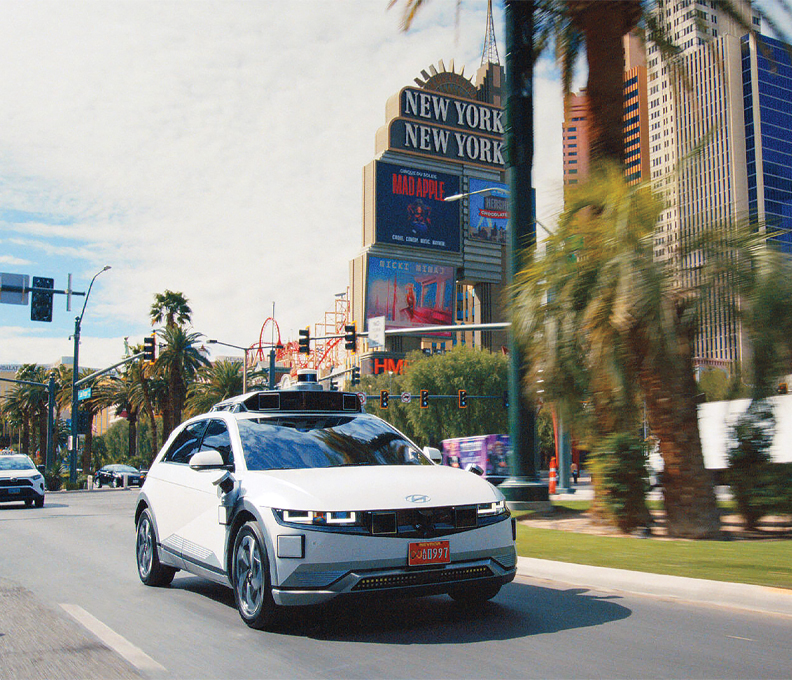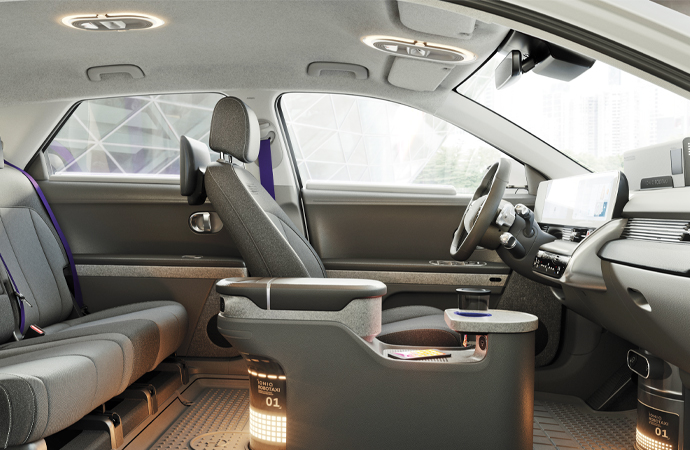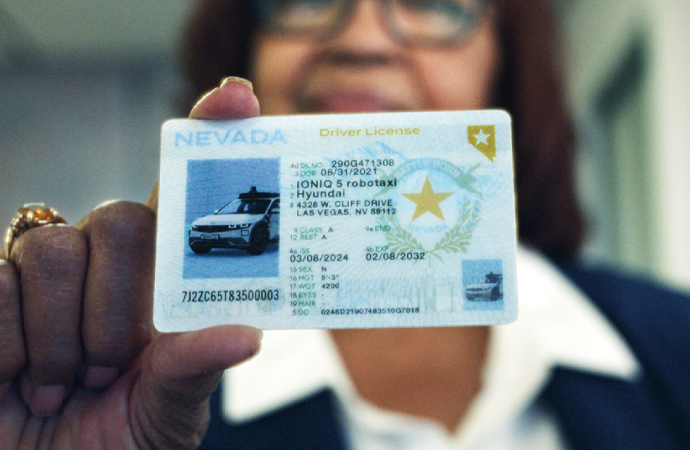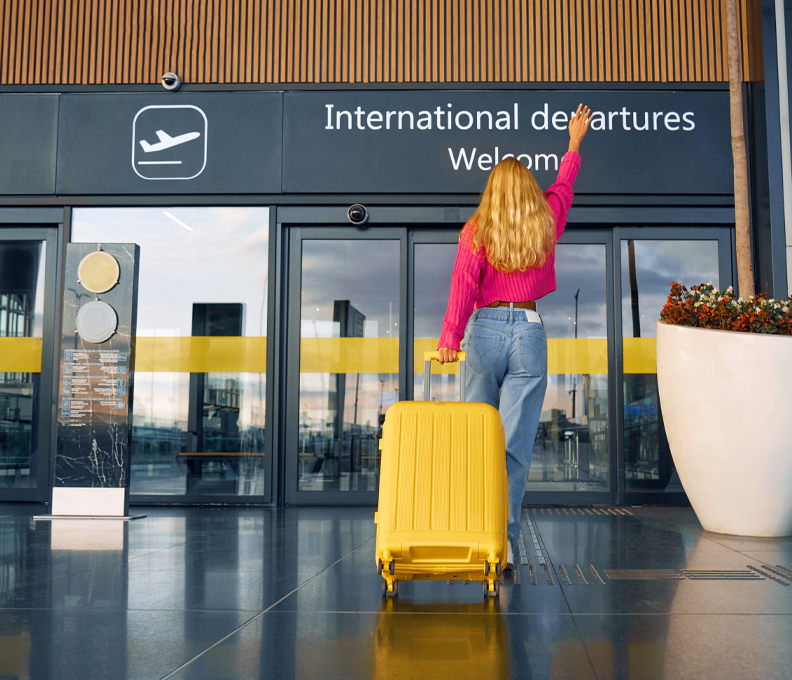Hyundai’s Autonomous Cabs Are Now Cruising the Las Vegas Strip
A handful of states allow certain autonomous vehicles to drive with no human behind the wheel
September 5, 2024

The Ioniq 5 on the Las Vegas Strip / Photo: Courtesy of Hyundai
Never drowsy, drunk or distracted—that’s how Boston-based Motional is reassuring us autonomous cars are safe to ride in. And what better place to show off a vehicle’s integrity than the rooftop test track of a seven-story building?
Last year, Motional’s automotive partner, Hyundai, launched production of the Ioniq 5 robotaxi at the company’s new Innovation Center in Singapore. The $400 million facility features a high-rise Skytrack—the unique proving ground loops 744 yards around the roof and has banked curves.

Production in Hyundai’s Innovation Center in Singapore / Photo: Courtesy of Hyundai
The state-of-the-art assembly plant also acts as a laboratory for automated production, which breaks away from traditional, conveyor-belt manufacturing. The system allows the facility to produce several products at once, outside the confines of a regular production line. Fifty percent of the work is done by 200 robots.
A far cry from Henry Ford’s first factory for the Model T, Hyundai’s Singapore plant can be a weird place. On the production level, robotic “dogs” built by Massachusetts-based Boston Dynamics roam the floor in search of faults.
Elsewhere, two levels are dedicated to vegetable production. Hydroponic vertical gardens are part of Singapore’s efforts to become more self-sufficient. Downstairs, customers buying new cars can take delivery in an audiovisual hall, where the vehicle is presented on a robotic trolley.
However, the Innovation Center’s cause célèbre is autonomous technology. Self-driving cars such as the all-electric Hyundai robotaxi are set to revolutionize how people and goods are moved around the U.S. Exponents claim the tech is already about as safe as the average human driver and it’s only going to get better.

Interior of Hyundai and Motional’s Ioniq 5 robotaxi / Photo: Courtesy of Hyundai
“Robotaxi represents our vision of a driverless future becoming a reality,” says Motional CEO Karl Iagnemma. “Our collaboration with Hyundai enables us to manufacture a vehicle that’s highly safe, reliable and cost-optimized for global production.
“We now look forward to introducing the world to some of the first-ever Federal Motor Vehicle Safety Standards-certified vehicles,” he continues. “We have developed an industry-leading robotaxi that meets federal standards and is ready for mass commercialization.”
Not everyone would agree. In October, California suspended driverless vehicles operated in San Francisco by General Motors’ subsidiary Cruise, just months after the state allowed robocabs to pick up paying passengers around the clock for the first time.
It followed a highly publicized accident in which a pedestrian was hit by a Cruise vehicle. Shortly thereafter, Cruise recalled almost 1,000 cars to update software, while company founder Kyle Vogt stepped down less than a month later.

The car receives a Nevada driver’s license / Photo: Courtesy of Hyundai
Despite bold promises from the technology and car companies involved, how soon Americans will be shuttled around in Jetsons-style autonomous vehicles is still tied up in complicated regulations. Pennsylvania-based SAE International has defined six levels of automation, adopted by the U.S. Department of Transportation.
SAE levels 0 to 5 move from the zero-automation “regular” cars most of us drive today to full-automation vehicles that perform all driving tasks under all conditions, like rain, fog and snow. Right now, only a few self-driving cars, such as the Hyundai robotaxi, are Level 4, or a vehicle that performs all driving tasks “under specific circumstances.” Geofencing is therefore required and human override is still an option.
At the same time, and to add to the complications, U.S. federal lawmakers have yet to establish a clear, nationwide policy that will turbocharge the drive toward autonomous vehicles. Instead, individual states have introduced wildly varying regulations.
Since 2017, approximately half have passed laws regarding the use of driverless cars. Only a handful, such as Florida, Nevada, Georgia and West Virginia, allow cars with SAE Level 4 to drive with no human behind the wheel.
The system is further complicated by differing insurance regulations from state to state, whether autonomous trucks fall under the same category as cars, and deciding who has the authority to act when the worst happens. The National Highway Traffic Safety Administration recorded 288 crashes involving automated driving systems in 2023.
Hyundai will face the same unforgiving scrutiny as companies such as Cruise and Alphabet-owned Waymo, but spokesman Hongbum Jung says Hyundai is fully up for the challenge: “We are committed to a continuous journey of innovation. Our aim is to spearhead a paradigm shift in the future of mobility.” The first driverless Ioniq 5 robotaxis, each with a suite of 30 advanced sensors, are currently being rolled out on the Las Vegas Strip.




